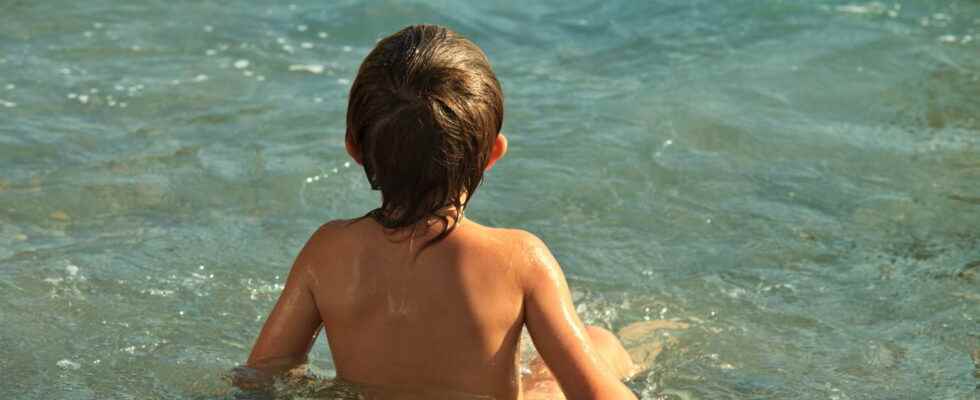Infected by the “brain-eating” amoeba Naegleria fowleri, while swimming in a river, a child died in August in the United States. A similar case was reported in France. What is this amoeba? What are the signs of infection and what to do?
[Mise à jour le 24 août 2022 à 11h43] In August, a child died in the Nebraska to UNITED STATES after being infected with brain-eating amoeba (Naegleria fowleri). Authorities say the child, whose name and age are not known, was infected after swimming in the river Elkhorn near Omaha. It’s not not the first case in the USA. In 2019, a 10-year-old American woman also died after being infected with this amoeba that enters the body and ascends to the brain where it leads to so-called “primary amoebic” meningoencephalitis (MEAP). She had bathed in a river and a lake in the Texas. “L‘amoeba is present in fresh water in Texas and elsewhere in the United States, there is no particular body of water that would pose a greater risk. The cases are extremely raredespite the millions of people who swim in lakes and rivers every year”, commented Texas Department of State Health Services spokesman Chris Van Deusen quoted by the local television station KWTX.
What is the amoeba Naegleria fowleri?
An amoeba is a unicellular microorganism, that is to say a living being made up of a single cell which moves by deforming and emitting membrane extensions (pseudopodia). There are several species including free pathogenic amoebae of the species Naegleria fowleri who live in the fresh water whose temperature exceeds 25°C. They are detected mainly in summer and autumn and in all types of bathing (swimming pool, whirlpool baths, lake, river…). For ANSES, “the public health risk is low compared to that of other infectious diseases linked to bathing”.
Contamination occurs through exposure of the nasal mucosa to water containing Naegleria fowleri, usually when swimming (when the water enters the nose). Once in the nasal passages of the bather, the amoeba crosses the mucous membrane then travels along the olfactory nerve to the brain resulting in lesions and inflammation. That’s why it’s commonly called “brain-eating amoeba”.

What are the symptoms after infection with a “brain-eating” amoeba?
The girl who died in 2019 in the United States had been taken from headache and of fever which led his parents to take him to the hospital. amoeba Naegleria fowleri leads to a particular type of meningoencephalitis that is, meningitis combined with encephalitis. His signs are similar to those of bacterial meningitis. They start 1 to 9 days (median 5 days) after infection according to the United States Centers for Disease Control and Prevention (CDC). Signs and symptoms include:
At stage 1:
- Severe frontal headache
- Fever
- Nausea
- Vomiting
At stage 2:
- Torticollis
- Altered mental state
- Hallucinations
- Coma
What are the risks of death?
Primary amoebic meningoencephalitis is a serious illness that results in death in 95% of cases. In 2014, ANSES reported 310 cases of primary amoebic meningoencephalitis worldwide, of which 11 people survived. People die 1 to 18 days (median 5 days) after symptoms start.
Avoid swimming in warm or heated water when it is very hot and the water level is low.
Have there ever been cases of brain-eating amoeba in France?
A case of MEAP was declared in France in 2008. A 9 year old boy died of one lightning meningitis following a swim and dips in a pool fed by a hot spring, in Guadeloupe, where the presence of N. fowleri was detected. Analyzes revealed the presence of N. fowleri in the cerebrospinal fluid of the victim. ANSES recalled that “the compliance with the conditions for implementing disinfection treatments currently authorized in France for thewater supplying public swimming pools is sufficient to prevent the risk of contamination water by this species of free-living amoeba”.
ANSES recommends limiting the exposure of swimmers according to the type of bathing. “For all bathing activities, the only effective measure for preventing infection with N. fowleri is to avoid being exposed to it and therefore to refrain from practicing bathing activities in hot or heated water, in particular when the air temperature is high and the water level low” indicates ANSES. As a precaution, and even if the risk of contracting this amoeba remains low according to the authorities, it is recommended to:
- do not dive or jump into untreated hot springs (surface water, ground water, natural mineral water);
- avoid putting your head under water / keep your head above water;
- use a nose clip whenever possible ;
- avoid digging, or stirring up sediment while practicing water-related activities.
Sources:
Naegleria fowleri in bathing water: serious but rare infections. Handles. 2014
Naegleria fowleri — Primary Amebic Meningoencephalitis (PAM) — Amebic Encephalitis. CDC.
